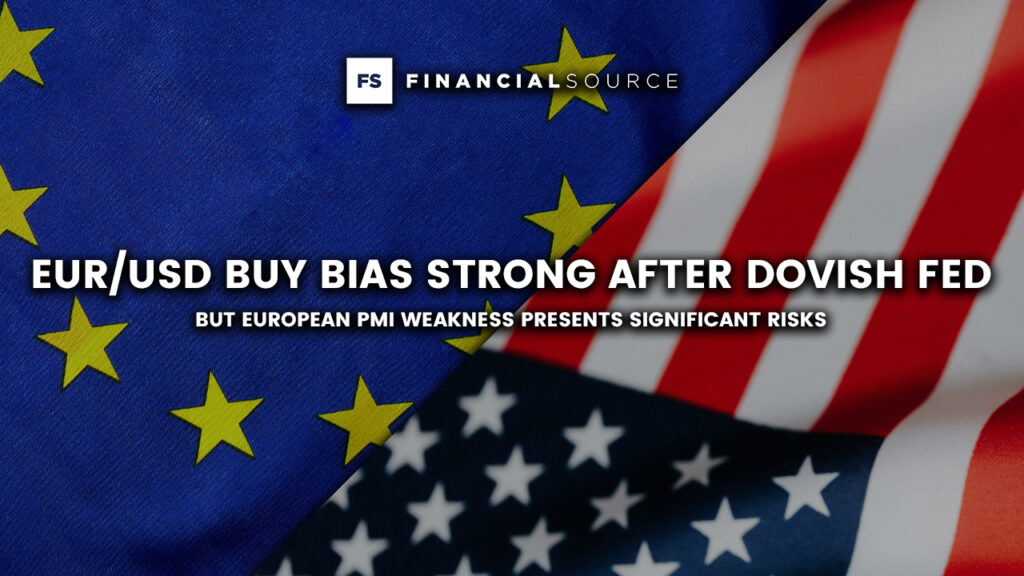EUR/USD Buy Bias Strong After Dovish Fed, but European PMI Weakness Presents Significant Risks

Following the dovish stance from the recent Federal Reserve meeting, which confirmed a 50bps rate cut and lowered the dot plot projections, the EUR/USD buy bias remains strong. Lower U.S. inflation expectations, alongside a projected rise in unemployment, signal continued weakness for the dollar. The widening yield spread between German bunds and U.S. treasuries further supports the case for euro strength. Traders should look for buying opportunities near the 1.103 level, with an upside target around 1.1240.
However, the narrative isn’t without its risks. Weak European PMI data, especially from Germany and France, adds layers of complexity. The French HCOB Composite Flash PMI dropped sharply to 47.4, well below market expectations of 50.6, marking the steepest contraction in business activity since January. This decline, led by the services sector, suggests the French economy is on the verge of stagnation, a worrying sign for euro bulls. Any growth seen in August has evaporated, confirming the slowdown in the third quarter.
The German PMI report offers no relief either. The German HCOB Composite Flash PMI came in at 47.2, below the expected 48.2. German manufacturing, a key driver of the eurozone’s economy, is facing a severe downturn, with companies shedding jobs at levels not seen since the height of the COVID-19 pandemic. Negative headlines from Volkswagen and a slowdown in services point to a broad-based contraction in Europe’s largest economy.
These developments have caused markets to reassess their outlook for the ECB, with a 70% probability now assigned to a 25bps rate cut in October. For traders, this introduces a precarious balancing act: while the Fed’s dovish outlook supports the euro, the deteriorating macroeconomic conditions in the eurozone threaten to counterbalance this. Should U.S. data continue to weaken—particularly PMI reports and upcoming inflation readings—it could further support the euro. However, further deterioration in eurozone economic data could offset dollar weakness and cap the euro’s upside potential.
Risks to Watch:
Further declines in European PMIs could trigger fresh rounds of euro selling, especially if services data continues to worsen.
U.S. PMI and inflation data: weaker-than-expected prints could reinforce dollar weakness, while stronger-than-expected data could reverse recent EUR/USD gains.
A potential ECB rate cut would be a significant headwind for euro strength, complicating the EURUSD buy bias.